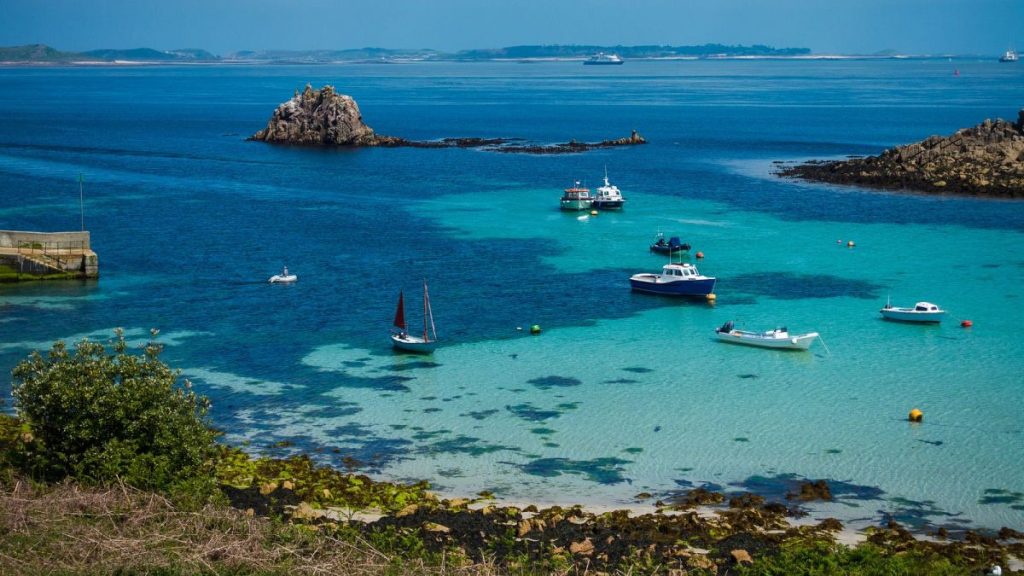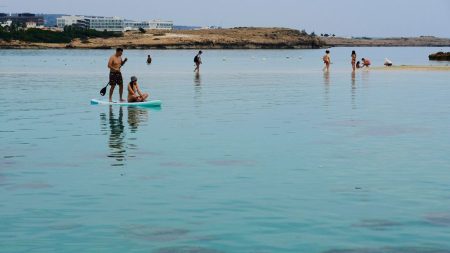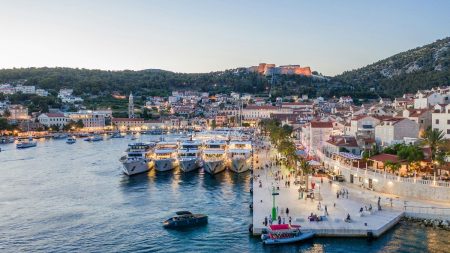The Isles of Scilly, located 28 miles off the Cornish coast, are a collection of 140 islands with five inhabited by a population of just over 2,000 people. Situated at the end of the North Atlantic Drift, they are often bathed in warm waters from the Gulf Stream, giving them a sub-tropical feel. However, the archipelago is vulnerable to fierce storms that cross the Atlantic and is increasingly threatened by sea level rise due to climate change. Scientists predict that sea levels will rise by one meter this century, with the Isles of Scilly potentially being the worst affected area in Britain. The islands face the possibility of becoming uninhabitable in the future, with coastal erosion posing a significant risk to infrastructure and wildlife.
In response to the threat of climate change, the Council of the Isles of Scilly has developed a Climate Change Action Plan to address the challenges posed by rising sea levels. The plan includes significant investment in sea defences and aims to achieve net-zero carbon emissions by 2030. With the highest point on the main island of St Mary’s being just 49 meters above sea level, there is a real danger of catastrophic consequences from coastal flooding. The town of Hugh, with its low elevation, is particularly at risk of increased flooding and could be the first to face potentially devastating impacts. These efforts highlight the urgency of addressing climate change and preserving the unique natural beauty and biodiversity of the Isles of Scilly.
Despite the threats posed by climate change, the Isles of Scilly remain a must-visit destination for nature lovers and outdoor enthusiasts. Voted the most scenic destination of outstanding natural beauty in the UK, the islands offer stunning landscapes and diverse wildlife. Visitors can witness puffins nesting alongside grey seals, and snorkelers have the chance to explore the rich biodiversity of the underwater environment, including sightings of sharks and dolphins. The unique flora and fauna of the Scilly Isles make them a special place to visit, and efforts to preserve this natural heritage are ongoing.
For travelers interested in visiting the Isles of Scilly, there are several transportation options available. Visitors can choose to fly by helicopter or plane, or arrive by sea on the Scillonian III passenger ferry. Additionally, there are opportunities for island hopping with various boat services operating between the islands. Food is another highlight of a trip to the Scilly Isles, with fresh seafood from local fishermen a regular feature on menus. Camping by the sea offers a unique experience, with stunning views of white sand beaches and warm weather that makes the islands feel more Mediterranean than other parts of the UK. The availability of fresh, locally sourced ingredients adds to the appeal of dining on the islands.
Travelers can plan a trip to the Isles of Scilly throughout the year, with a range of transportation options and activities to enjoy. Whether exploring the unique wildlife, relaxing on the beaches, or sampling the delicious seafood, the Scilly Isles offer a memorable and rewarding experience. As efforts to address climate change and protect the islands’ natural beauty continue, visiting the Isles of Scilly can also serve as a reminder of the importance of environmental conservation and sustainable practices. By supporting initiatives to mitigate the effects of climate change and preserve the beauty of the Scilly Isles, visitors can contribute to safeguarding this special destination for future generations to enjoy.












